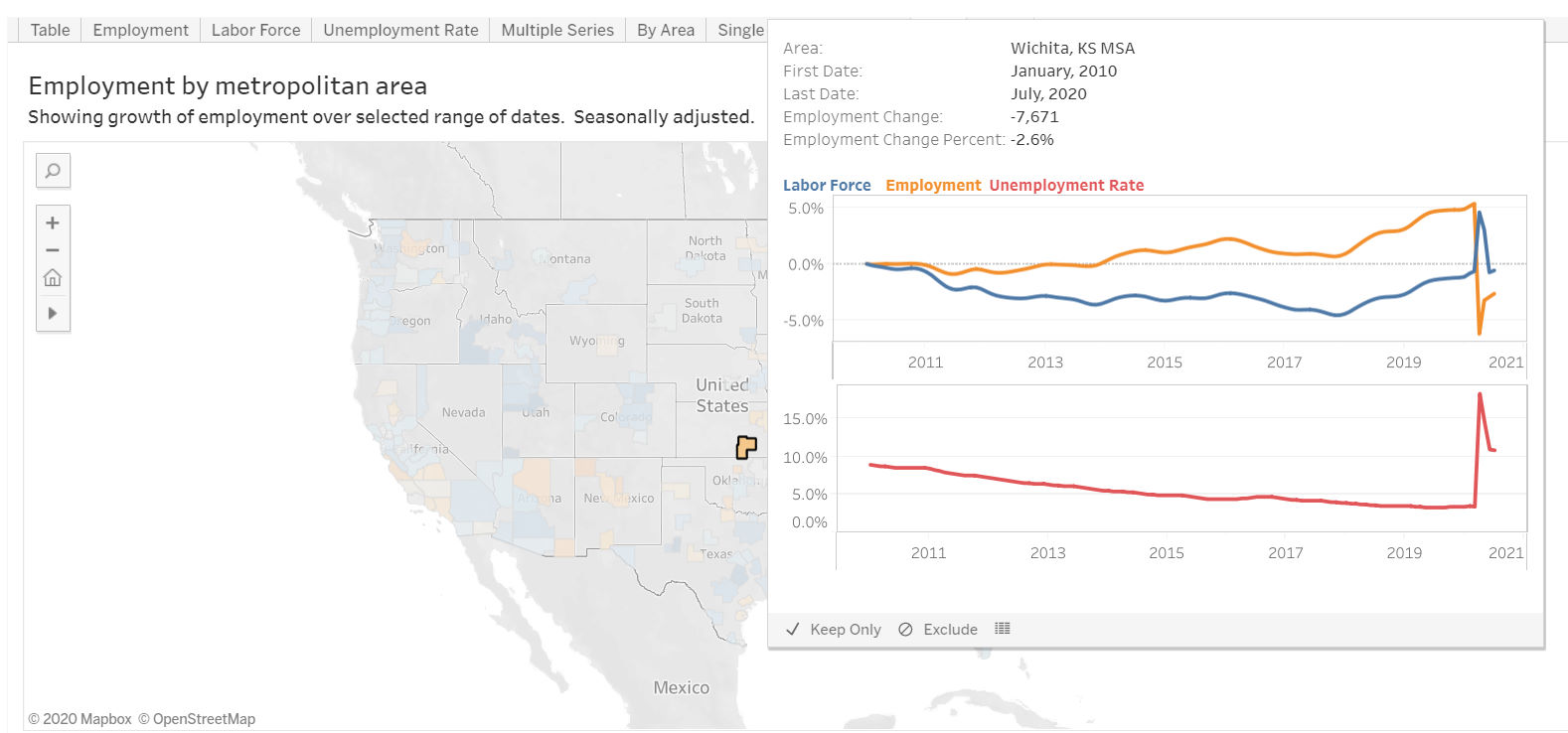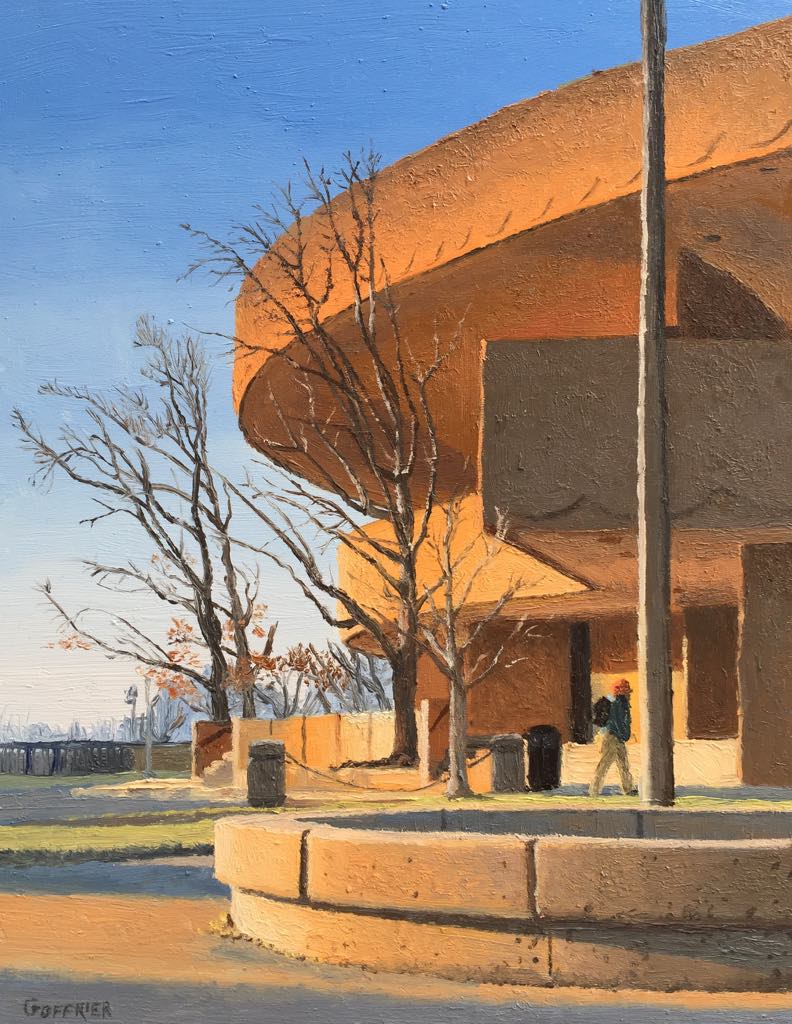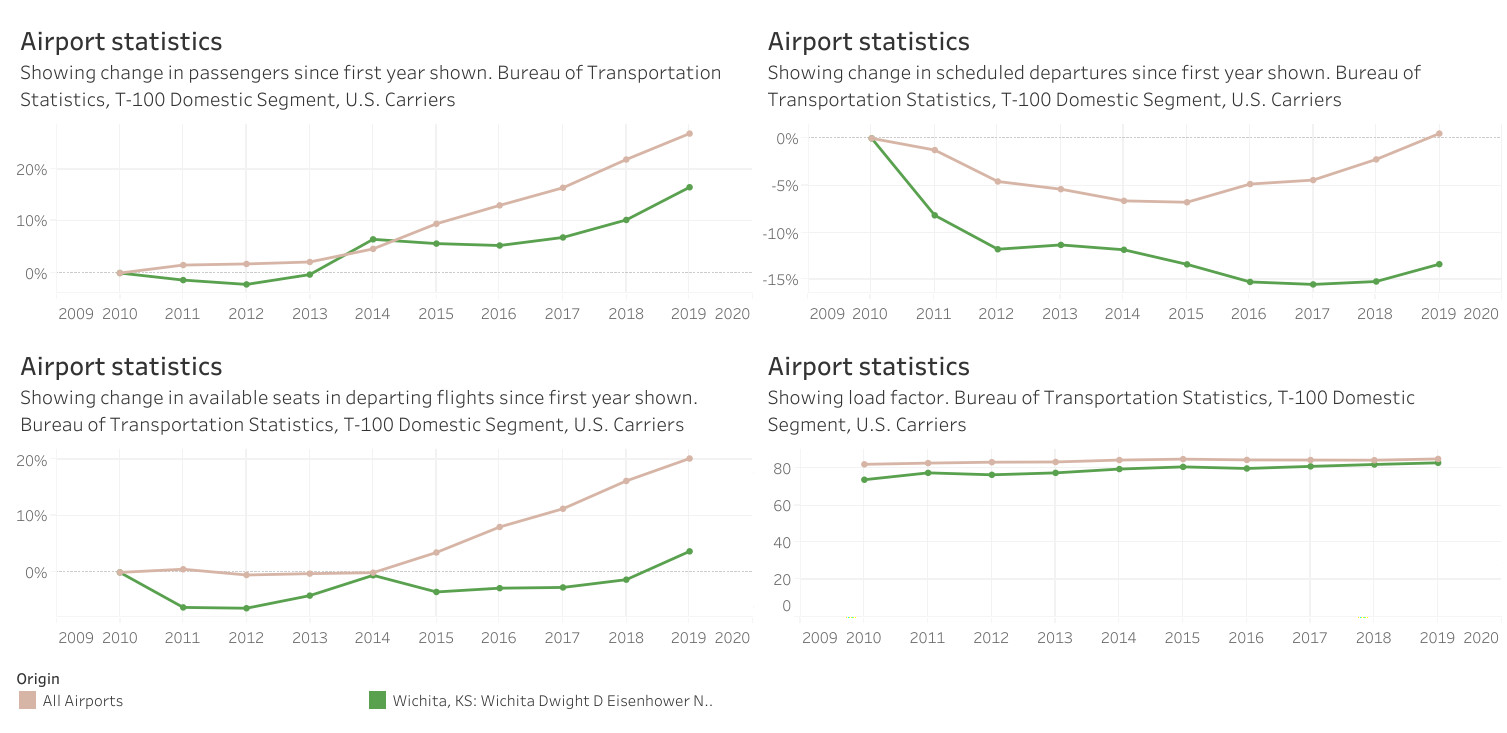For the Wichita metropolitan area in August 2020, the number of unemployed persons is up, the unemployment rate is up, and the number of people working is down, all by large amounts, when compared to the same month one year ago. The recent trend, however, is positive, although Wichita is recovering slower than the nation.
Data released today by the Bureau of Labor Statistics, part of the United States Department of Labor, shows the effects of the response to the pandemic in the Wichita Metropolitan Statistical Area for August 2020.
Click charts and tables for larger versions.
Total nonfarm employment fell from 303,900 last August to 289,100 in August 2020, a loss of 14,800 jobs (4.9 percent). (This data is not seasonally adjusted, so month-to-month comparisons are not valid.) For the same period, employment in the nation fell by 7.0 percent. The unemployment rate in August 2020 was 10.2 percent, up from 3.6 percent one year ago.
Considering seasonally adjusted data from the household survey, the labor force fell by 1,201 persons (0.4 percent) in August 2020 from July 2020, the number of unemployed persons fell by 1,962 (5.7 percent), and the unemployment rate was 10.1 percent, down from 10.7 percent in June. The number of employed persons not working on farms rose to 287,361 in August from 286,600 the prior month, an increase of 761 persons (0.3 percent).
The following chart of the monthly change in the labor force and employment shows the magnitude of drop in April overwhelming other months, and then a positive change in employment for the following months. The rate of increase in employment has generally slowed since a large jump in May. Note the fall in the labor force for the month.
The following chart of changes from the same month one year ago shows a similar same trend — fewer jobs, although the labor force is larger.
The following chart of changes in employment from the same month of the previous year shows months when the Wichita MSA performed better than the nation. In all months affected by the pandemic, we see the decline in employment Wichita has not been as severe as the nation.
The following chart shows the monthly change in nonfarm jobs for Wichita and the nation. For August, the change was nearly the same for Wichita and the nation, but in the two previous months jobs grew slower in Wichita.
The following two charts show changes in jobs for Wichita and the nation over longer periods. The change is calculated from the same month of the previous year. For times when the Wichita line was above the nation, Wichita was growing faster than the nation. This was often the case during the decades starting in 1990 and 2000. Since 2010, however, Wichita has rarely outperformed the nation and sometimes has been far below the nation.
(For data on all metropolitan areas in the nation, see my interactive visualization Metro area employment and unemployment.)




































